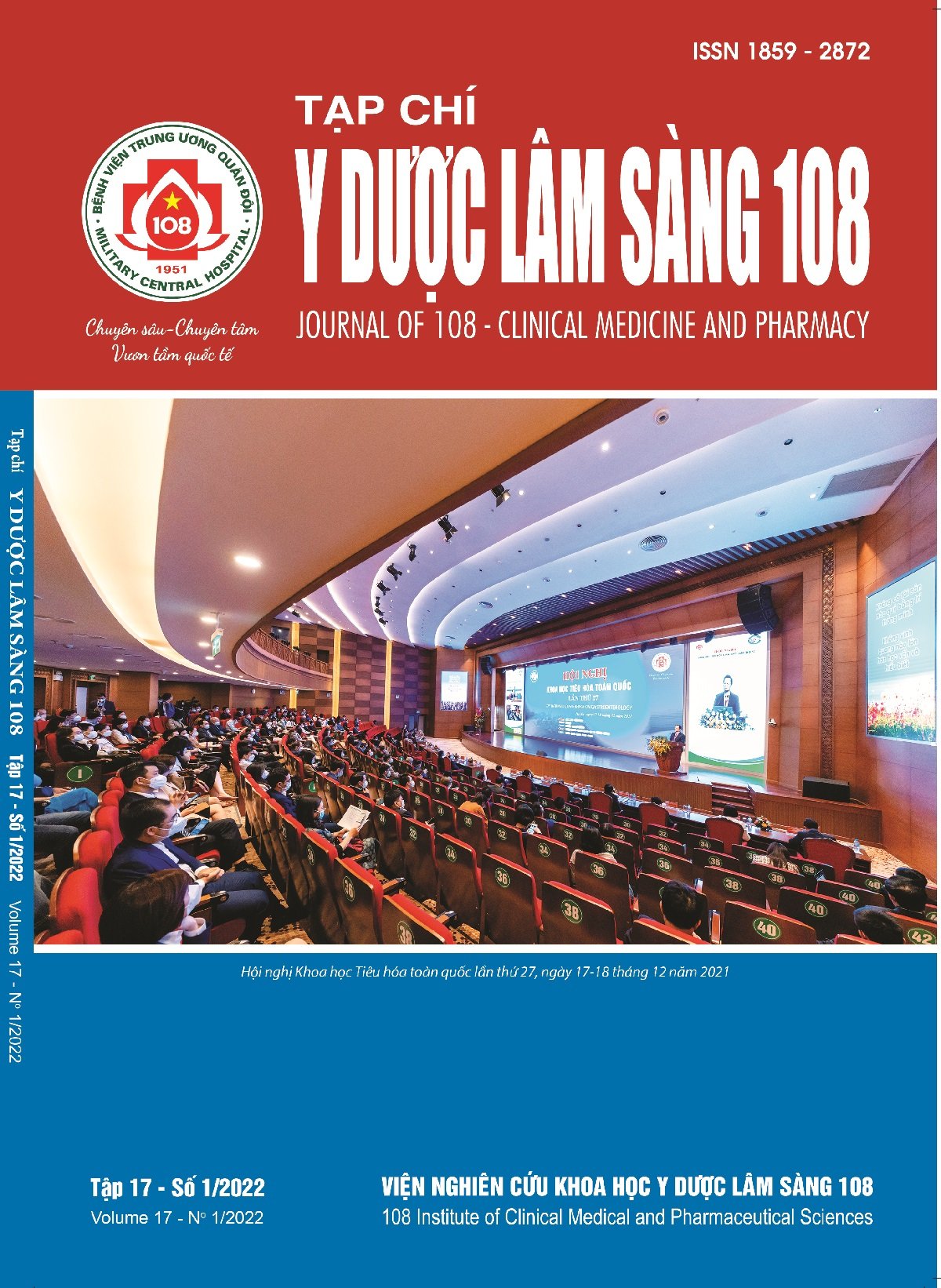Assessment of dyslipidemia in the submarine soldier
Main Article Content
Keywords
Abstract
Objective: To assess the dyslipidemia in submarine soldiers. Subject and method: A cross-sectional study was carried out in 290 submarine soldiers being divided into 2 groups: Group 1 including 101 subjects (frequently experiencing in the sea), group 2 including 189 subjects (working on the land). Some baseline characteristics were recorded and the blood test was done for all studying subjects to evaluate serum lipid concentration, and then dyslipidemia classification was determined. Result: The percentage of overweight took up 42.4%, the obesity accounted for 16.4%. The overall prevalence of hypercholesterolemia, hypertriglyceridemia, high LDL-C were 35.5%; 31.7%, 21% respectively, all of which were seen higher in the group 1 as compared to group 2. No significant difference in HDL-C was found in 2 groups. Conclusion: A significant prevalence of dyslipidemia was seen in submarine soldiers. A higher percentage of hypercholesterolemia, hypertriglyceridemia, high LDL-C was seen in group experiencing in the sea as compared to the group working on the land.
Objective: To assess the dyslipidemia in submarine soldiers. Subject and method: A cross-sectional study was carried out in 290 submarine soldiers being divided into 2 groups: Group 1 including 101 subjects (frequently experiencing in the sea), group 2 including 189 subjects (working on the land). Some baseline characteristics were recorded and the blood test was done for all studying subjects to evaluate serum lipid concentration, and then dyslipidemia classification was determined. Result: The percentage of overweight took up 42.4%, the obesity accounted for 16.4%. The overall prevalence of hypercholesterolemia, hypertriglyceridemia, high LDL-C were 35.5%; 31.7%, 21% respectively, all of which were seen higher in the group 1 as compared to group 2. No significant difference in HDL-C was found in 2 groups. Conclusion: A significant prevalence of dyslipidemia was seen in submarine soldiers. A higher percentage of hypercholesterolemia, hypertriglyceridemia, high LDL-C was seen in group experiencing in the sea as compared to the group working on the land.
Article Details
References
2. Nguyễn Hoàng Luyến ( 2017) Nghiên cứu điều kiện lao động và sức khỏe thủy thủ tàu ngầm. Luận án Tiến sỹ y học, Học viện Quân y, tr. 132-140.
3. Hội Tim mạch học Việt Nam (2010) Khuyến cáo của Hội Tim mạch học Việt Nam về các bệnh lý tim mạch và chuyển hóa, tr. 1-5.
4. Hội Tim mạch học Việt Nam (2008) Khuyến cáo 2008 của Hội Tim mạch học Việt Nam về chẩn đoán và điều trị rối loạn lipid máu. Khuyến cáo 2008 về các bệnh lý tim mạch và chuyển hóa. Nhà xuất bản Y học, tr. 476-501.
5. Gasier HG et al (2016) Cardiometabolic Health in Submariners returning from a 3-Month Patrol. Nutrients 8: 85.
6. Kang J, Song YM (2017) The association between submarine service and multimorbidity: A cross-sectional study of Korean naval personnel. BMJ Open 7: 017776.
 ISSN: 1859 - 2872
ISSN: 1859 - 2872
